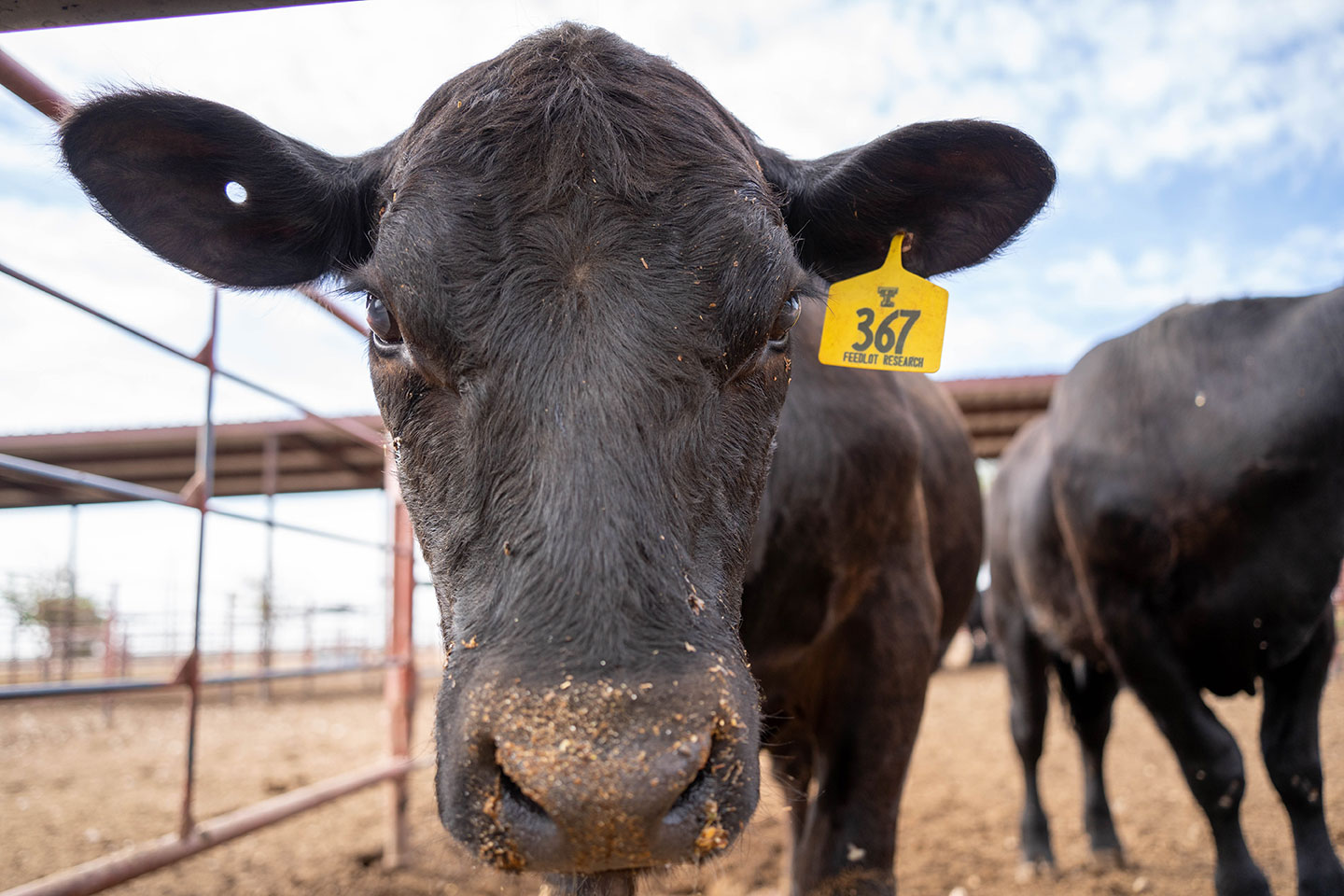The Feedlot
Design
The feedlot was designed to maximize experimental flexibility, to give proper control, and to provide sufficient replication.

The following criteria were an essential part of the design:
- Uniform conditions across the entire feedlot.
- Sufficient number of pens to provide adequate replication of experimental treatments.
- Accuracy in weighing feeds and micro-ingredients, diet mixing, and delivery of diets to the pens.
- Speed in delivering mixed diets to the feed bunks.
- Ease of handling cattle during experimental procedures and accuracy in weighing experimental cattle.
- Efficient use of land, minimizing mud problems and providing ease of cattle waste removal, with potential for research on cattle waste.

Layout
The Feedlot has 114 pens with a capacity of four animals per pen. Pen floors are partially slotted concrete. Sixteen conventional, shaded soil-floor pens with a capacity of 16 animals per pen are located adjacent to the 114 slotted-floor pens. In addition, four soil-floor pens located next to these 10 pens are equipped with Calan headgates to allow individual feeding of up to 24 animals. Cattle in the slotted floor pens are fed daily, through the use of a batch-based system, with delivery of feed to pens via a tractor-pulled, 1-ton capacity Rotomix (84-8) feed wagon. Accurate weights of feed ingredients and micro-ingredients mixed in diets are obtained and electronically recorded from stationary scales in the feed mill or on the self-propelled mixer.

The cattle working facility allows cattle to be handled with ease during various experimental procedures. An individual scale and a six-animal platform scale electronically record cattle weights, which are merged with feed data for data computation and statistical analyses. Eighteen sorting pens are included in the cattle working area and an office with a sample preparation laboratory.

Animal waste is removed from beneath the slotted-floor pens by a scraper system that
moves the waste material to collection pits. From these pits, the waste is pumped
into a large surge pit from which the material can be: 1) run over a solids separator;
2) used for irrigation directly on crop fields; or 3) hauled directly to crop fields
with a liquid tank for dispersal and injection directly into the soil. The surge pit
can be modified to allow methane conversion of the animal waste.

Overview
The Burnett Center feedlot facilities were designed to conduct accurate research under controlled conditions. These are research facilities and are not intended to be a prototype for commercial feedlots. Nonetheless, cattle and feed management at the Burnett Center feedlot is designed to mimic industry conditions as closely as possible, thereby ensuring applicability of research results to the commercial feedlot industry.

Burnett Center
-
Address
Texas Tech University, Department of Animal and Food Sciences, Box 42141, Lubbock, TX 79409 -
Phone
806.742.2805 -
Email
afs@ttu.edu
